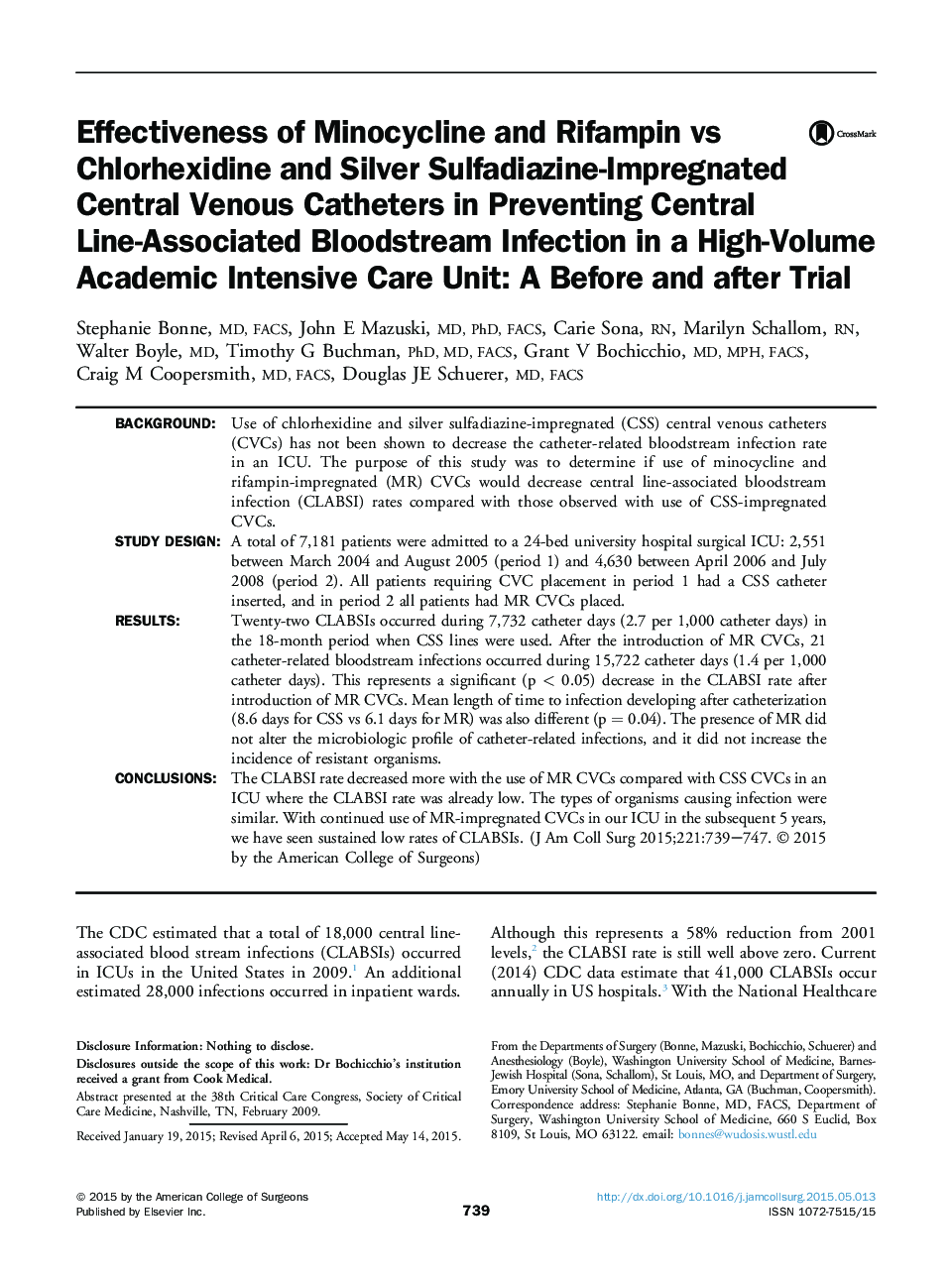| کد مقاله | کد نشریه | سال انتشار | مقاله انگلیسی | نسخه تمام متن |
|---|---|---|---|---|
| 4290822 | 1612216 | 2015 | 9 صفحه PDF | دانلود رایگان |
BackgroundUse of chlorhexidine and silver sulfadiazine-impregnated (CSS) central venous catheters (CVCs) has not been shown to decrease the catheter-related bloodstream infection rate in an ICU. The purpose of this study was to determine if use of minocycline and rifampin-impregnated (MR) CVCs would decrease central line-associated bloodstream infection (CLABSI) rates compared with those observed with use of CSS-impregnated CVCs.Study DesignA total of 7,181 patients were admitted to a 24-bed university hospital surgical ICU: 2,551 between March 2004 and August 2005 (period 1) and 4,630 between April 2006 and July 2008 (period 2). All patients requiring CVC placement in period 1 had a CSS catheter inserted, and in period 2 all patients had MR CVCs placed.ResultsTwenty-two CLABSIs occurred during 7,732 catheter days (2.7 per 1,000 catheter days) in the 18-month period when CSS lines were used. After the introduction of MR CVCs, 21 catheter-related bloodstream infections occurred during 15,722 catheter days (1.4 per 1,000 catheter days). This represents a significant (p < 0.05) decrease in the CLABSI rate after introduction of MR CVCs. Mean length of time to infection developing after catheterization (8.6 days for CSS vs 6.1 days for MR) was also different (p = 0.04). The presence of MR did not alter the microbiologic profile of catheter-related infections, and it did not increase the incidence of resistant organisms.ConclusionsThe CLABSI rate decreased more with the use of MR CVCs compared with CSS CVCs in an ICU where the CLABSI rate was already low. The types of organisms causing infection were similar. With continued use of MR-impregnated CVCs in our ICU in the subsequent 5 years, we have seen sustained low rates of CLABSIs.
Journal: Journal of the American College of Surgeons - Volume 221, Issue 3, September 2015, Pages 739–747
